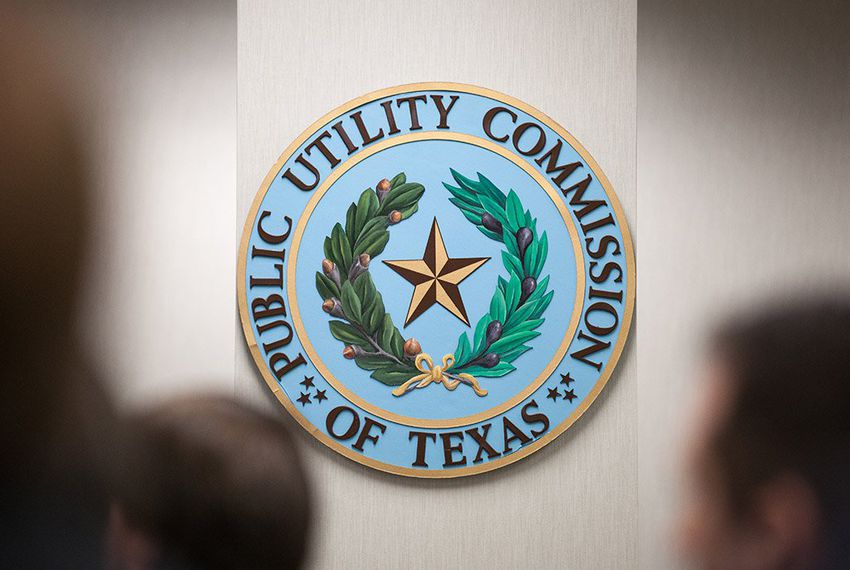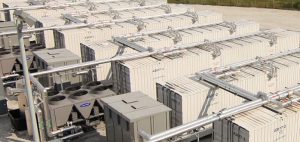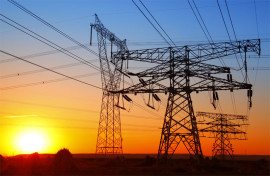
By Robert King, Good Company Associates
Following a century of electric grids based exclusively on large, centralized power plants and the one-way flow of energy, a growing array of innovative, on-site or localized energy resources are finally available to consumers. Prominent examples include rooftop solar, energy storage, more efficient buildings, the expanding capacity of the Internet of Things to enable customers to voluntarily curtail their energy use in response to price signals or emergencies (demand response), and the growing fleet of electric vehicles.
These emerging technologies, now labeled distributed energy resources (DER), offer a range of potential benefits to various participants in the market today. Customers benefit from reduced consumption of purchased electricity, reduced demand charges through time shifting energy use, and lower rates. As discussed below and depending on their deployment and use, DER can also help local utilities and the Electric Reliability Council of Texas (ERCOT), which operates both the regional grid and the wholesale electricity market. All parties benefit from increased reliability, resilience, and self-sufficiency.
The proliferation of these resources has been hampered, however, because the unique structure of today’s competitive electric market makes it difficult for the owner of distributed resources to receive compensation for on-site and system-level benefits.
This article addresses potential benefits of DER and discusses the unique nature of the ERCOT electric market. It also describes an investigation, or rulemaking, the Public Utilities Commission of Texas (PUCT) is considering to address utility ownership of energy storage or DER, which could answer the broader question of how best to encourage economical DER. Finally, it introduces a creative, consensual solution offered by a regional non-profit, SPEER (the Southcentral Partnership for Energy Efficiency as a Resource), to capture the value and spur the beneficial development of distributed resources.
Potential Public Benefits of Distributed Resources
DER can provide benefits to the local or regional grid, as well as to the owners or users.

Battery storage. One of the more promising and flexible distributed energy resource, storage presents tricky market issues for regulators.
Less need for generation. Reduced demand for electricity, or local generation, decreases demand for marginally economic generation, avoids the need to build new power plants, improves utilization of existing plants, and reduces friction-induced energy loss transmitting power from afar.
Less need for ancillary services. To keep the lights on and power quality high, ERCOT coordinates the delivery of electricity for all power suppliers. To balance the need for electric power minute-to-minute, ERCOT purchases additional energy or standby capacity called ancillary services. These include reserve and emergency capacity, frequency support, and “black-start” capacity that can help the grid power up after a blackout.
Less need for new transmission and distribution infrastructure. DER can eliminate the need for transmission and local distribution system upgrades.
Less pollution. Many DER will be less polluting than the traditional centralized power generation model.
However, the public adoption and contributions from DER have been slower to materialize than its potential suggests, in part due to the legal separation of the traditional role of ERCOT utilities.
The ERCOT Competitive Market Structure
In 1999, the Texas legislature passed a law requiring the separation of the historical elements of investor owned utilities (IOUs), which serve near 80 percent of the customers in the state. The purpose was to minimize the portion of the business granted a monopoly and increase competition on the remaining elements. (Because municipal utilities and electric cooperatives are run by councils or boards elected by their constituents or members, adoption of this structure is optional for these entities.)
Both the generation of power and the retail customer service elements of the business were to be “unbundled” from the provision of “poles and wires.” Only the transmission and distribution of electricity remain a regulated monopoly. (What would be the public benefit of having competing power distribution lines into every home and business?)
Like the telecommunications and natural gas industries before, the distribution of power was determined to be the business of a “common carrier.” That is, utilities were forbidden to generate or take possession of electric power and were only to offer non-discriminatory electric delivery services for competing retail providers to deliver power to consumers from competing power generators. Utilities were also forbidden from offering consumer energy services already available in the competitive market.
While restructuring of the electric market brought significant competition and resulted in relatively low electric rates, it also introduced challenges for incorporation of unanticipated new technologies. For example, utilities have little incentive to stimulate DER to avoid investments of their own. Consumers will have less incentive to purchase DER, or operate their DER in ways that support the grid’s operation, unless they can be compensated.
Rulemaking Announced by the PUCT

Power transmission. Is there a better way?
The regulated utility American Electric Power (AEP) filed an application in 2017 to install distributed storage facilities. AEP offered two cases in which installing and operating storage would be significantly less costly than traditional “wires” solutions to address certain delivery constraints. Their plan would cost about $1.6 million, where traditional utility upgrade options range from $6 to $17 million.
No one questions whether these specific tradeoffs make economic sense. However, many questions arise. Can a utility purchase electricity to charge a battery? Whom does a utility charge for later injection of stored electricity during a peak period? Storage is clearly not the only distributed resource that might avoid the need for traditional wires improvements, but how would the utility best consider such alternatives? And how would the PUCT determine when substitution of a nontraditional, distributed resource solution is in the public interest?
The PUCT recognized these as existential questions within the current structure and the underlying philosophy of the ERCOT competitive market. It therefore chose to not grant AEP one-off approval of the proposed storage applications but, encouragingly, to instead initiate a project to address more broadly the role of IOUs and the expanding potential of DER.
A Possible Win-Win Solution
In parallel to the PUCT proceeding, SPEER organized a diverse citizen Commission on Energy Efficiency Policy to address utility policy and DER. The result of year-long negotiations is a policy consensus on how to resolve the very questions the new PUCT proceeding will propose. The consensus solution is captured in the concise SPEER Commission report. A background staff paper is also available.
There was agreement that a wide range of distributed resources can eliminate the need for traditional wires expansions. Upgrading the efficiency of every home in a subdivision, for example, can avoid the need to upgrade the substation serving the neighborhood.
But it was also recognized that incentives to improve the community’s efficiency or stimulate local generation investments are expenses to a utility. Regulators may allow it to recover the expense, but under current regulations the utility would also be allowed to earn a profit on a substation upgrade, making the traditional response more attractive. This is why AEP proposes owning the storage facility itself, despite the fact that it raises issues regarding its purchase and generation of electricity.
So the SPEER Commission agreed that utility expenses made to avoid a less optimal traditional investment should be treated as a capital improvement. That is, even if a utility just offers an incentive to drive customers to adopt DER, and that in turn obviates the need for traditional system investments, the utility should be able to receive a profit on its expense.
Finally, the SPEER Commission agreed that, to the extent the utility actually reduces its overall revenue requirements and thereby its distribution rates, it should be financially rewarded.
This formula would:
- drive utility executives to invest in their consumers’ homes and businesses to reduce costs for both the utilities and consumers;
- pay local systems owners to operate their systems in ways that support the grid when beneficial to the grid and all ratepayers;
- improve the economics of distributed resources from a customer point of view;
- conform to the Texas market structure, prohibiting the utility from taking or charging for electricity, or offering competitive energy services; and
- avoid the chaotic adoption and use of distributed resources in ways that increase the cost of grid operation for all ratepayers.
Utilities under this proposal would purchase services needed to support economic delivery of electricity from DER owners, for example, compensating owners for the contribution made by their rooftop solar or solar plus storage. Resource owners or their service providers would still be free to use the resources to reduce on-site costs, but they could also sell energy, emergency capacity, or ancillary services into the ERCOT wholesale market, multiplying the benefits of these resources. Most market participants don’t want utilities to revert to providing such services.
We will keep you up to date on the progress of this important proceeding, and we encourage you to follow along.
Robert King, a former state official in Texas and California, offers business development and governmental affairs consulting and advocacy for emerging clean technologies through his firm, Good Company Associates. He is the original founder of TXSES (1977), TREIA (1982), and SPEER (2010), among other organizations. His board memberships include Mission:data and the Gulf Coast Power Association.
